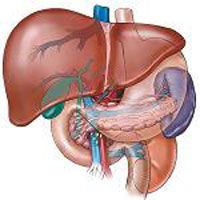Article
New Device Beats Placebo, Produces Durable Results in Moderately Obese Patients
Author(s):
An intragastric dual-balloon device was well tolerated and proved effective for patients with moderate levels of obesity, owing in part to its ability to conform to stomach anatomy, according to Jaime Ponce, MD, Medical Director for the Bariatric Surgery program at Hamilton Medical Center, in Dalton, Georgia.

An intragastric dual-balloon device was well tolerated and proved effective for patients with moderate levels of obesity, owing in part to its ability to conform to stomach anatomy, according to Jaime Ponce, MD, Medical Director for the Bariatric Surgery program at Hamilton Medical Center, in Dalton, Georgia.
Reporting results of the sham-blinded randomized controlled REDUCE Pivotal Trial on November 4, 2014 at Obesity Week in Boston, MA, Ponce described the two-balloon construction of the new endoscopically delivered saline-filled balloon. The balloon, designed to be left in place for 24 weeks, was trialed in patients with moderate obesity, with body mass indices (BMIs) of 30-40 kg/m2. Subjects had at least one other comorbidity, such as hypertension, dyslipidemia, or diabetes.
Identifying two co-primary endpoints, investigators sought a superiority margin of 7.5% for excess weight loss (EWL) in the DUO group, as well as having more than 35% of the DUO group achieve at least 25% EWL.
After screening, patients were randomized to the DUO group (n=187), receiving the dual-balloon implant and diet and exercise counseling, or to the DIET group (n=139), receiving diet and exercise counseling alone. Enrollees were 95% female, with a mean age of 44 and mean BMI of 35.4 kg/m2; subjects were well-matched between the two study arms.
Balloons were initially filled with 900 cc of methylene-blue tinted saline for all subjects; however, investigators found that participants of shorter stature tolerated the device better with 750 cc of saline, and filed a protocol amendment accordingly.
After the outpatient transoral endoscopic insertion procedure, both DUO and DIET arms were followed for 24 weeks in a blinded fashion (though most participants could correctly guess their study condition as the study progressed).
Patients were followed monthly for weight, adverse events, lab values including hemoglobin A1C and lipids, and self-reported quality of life measures. Nutrition and exercise counseling was also a component of the monthly meetings. After 24 weeks, both investigators and participants were unblinded, and sham (DIET arm) subjects were given the option to receive the dual-balloon intragastric device. All DUO recipients were followed for 24 weeks after balloon retrieval.
Co-primary endpoints were both met. DUO subjects lost significantly more of their excess weight at 24 weeks than those in the DIET arm [25.1% of the intention-to-treat (ITT) DUO population, 28.5% per-protocol (PP), vs 11.3% ITT, 13.4% PP of the DIET group, p=0.004% and 7.5% superiority margin for ITT]. The second co-primary endpoint was also met, with 49.1% of the ITT population and 55.9% of the PP DUO subjects achieving at least 25% EWL (p<0.001). Overall, DUO recipients maintained 65% of their EWL when followed for an additional 24 weeks.
Serious adverse events were rare; one esophageal perforation, one case of pneumonia post-retrieval and one esophageal mucosal tear occurred. There were no deaths. Nausea and vomiting were common for a few days after the procedure, but tended to abate quickly and were ameliorated with reassurance via scheduled phone followup; antiemetics were also made available to participants.
However, small superficial gastric ulcers were commonly noted on device retrieval. Since they tended to occur at the angle of incisure, investigators surmised that the shape of the superior tip of the balloon device was causing many of these erosions, prompting a minor redesign of the device. The rate of erosions dropped from 40% to 10% after the redesigned device was used (p=0.001).
In a lively but positive discussion after the presentation, discussant Manoel Galvao-Neto, MD, of the Clinica Gastro Obeso , São Paulo, Brazil, remarked that the trial was large and complex, achieving both a sham arm and a crossover, with good followup. Further, he noted that side effects and adverse events were reported openly and discussed honestly.
In questioning, Ponce pointed out that though results were toward the lower end of those seen in global studies of intragastric balloons, the study still met both endpoints despite using the FDA-mandated ITT population rather than the PP analysis permitted in some other countries. He envisions this device being useful in the context of a structured weight loss program, and notes that sequential insertions over time may help individuals with moderate obesity achieve significant and durable BMI reductions.




